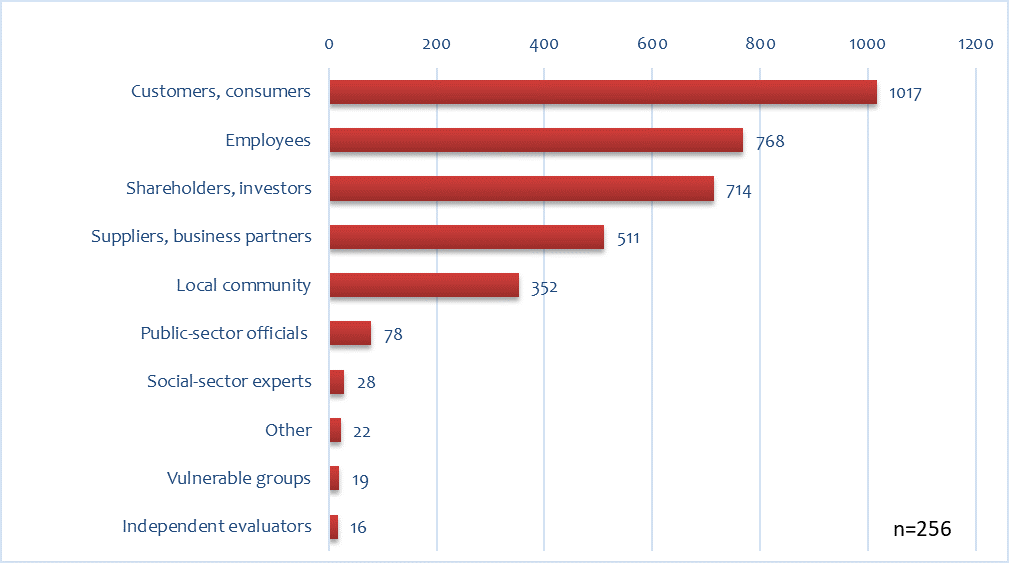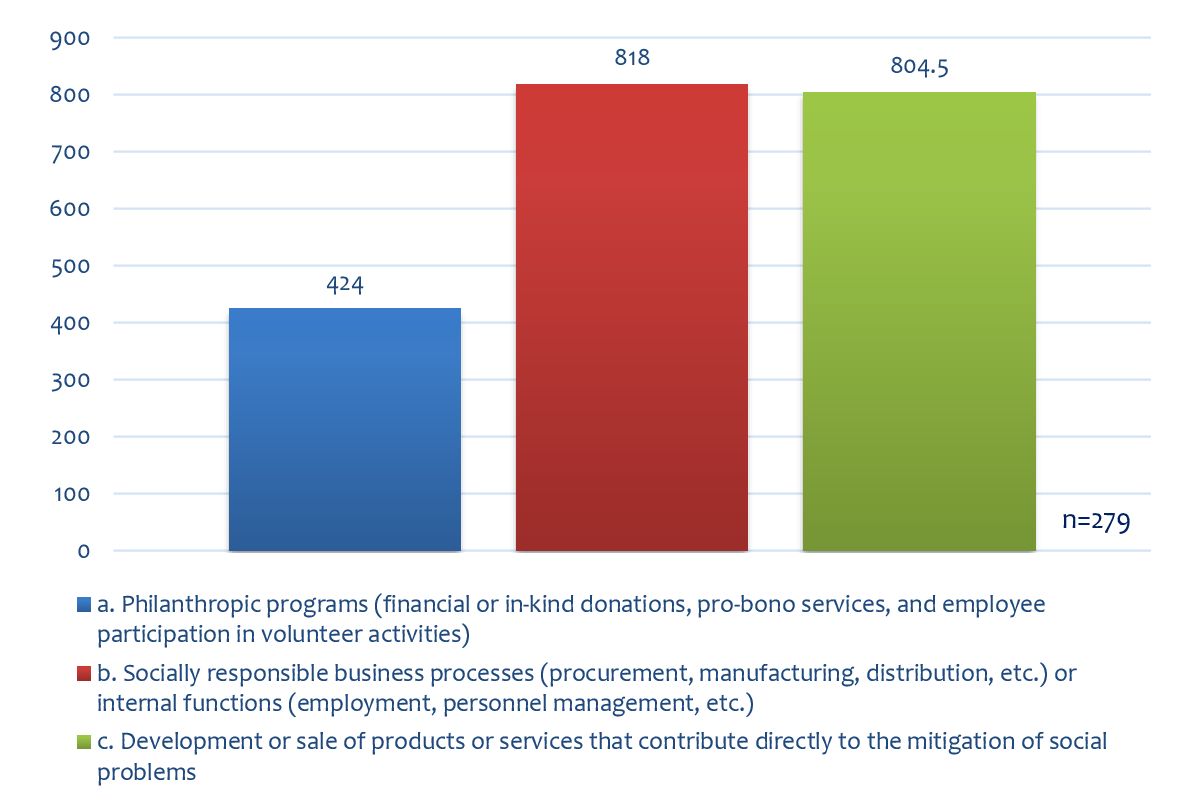
- Article
- Industry, Business, Technology
Varieties of CSR: A Cross-Country Comparison
September 24, 2019
For years now, people have been debating the meaning and practice of corporate social responsibility, or CSR. Is the purpose of socially responsible management policies to support long-term business growth and profitability or to contribute to the betterment of society? Must CSR be philanthropic and noncommercial in nature, or does it encompass business practices and commercial products that contribute to the mitigation of social problems? Are the answers to these questions the same in all countries, or do they vary? How have recent international trends, including the globalization of financial markets and the rise of ESG investing, affected the way companies around the world approach CSR?
In the following, I endeavor to answer these questions, drawing on a decade or so of academic research on international trends in CSR. In so doing, I argue that cultural and institutional diversity across nations has resulted in fundamental differences in businesses’ understanding and pursuit of CSR, and that we need to keep this diversity in mind when analyzing and assessing the CSR policies of Japanese companies.
The Purpose of a Business
“FedEx Corporation will produce superior financial returns for its shareowners by providing high value-added logistics, transportation, and related business services through focused operating companies.” (Opening statement, FedEx Mission & Goals)[1]
“Yamato helps enrich our society by enhancing our social infrastructure, creating more convenient services for evolving lifestyles and industries, and developing innovative logistics and distribution systems.” (Yamato Holdings Management Philosophy)[2]
A comparative assessment of CSR programs around the world needs to begin with an understanding of cross-national differences in the way society and the leaders of industry view the basic purpose of a business.
One might imagine that that all corporations operate in accordance with the same underlying business philosophy, but that is not the case. Some companies operate according to the principle of “shareholder sovereignty” and view their primary purpose as the maximization of shareholder value. Others see their mission as that of delivering benefits and satisfaction to a wider range of stakeholders, including employees, customers, business partners, and the local community, as well as shareholders. Both the shareholder and the stakeholder model can be found in any given country, but comparisons have revealed that the predominant model differs by country.
In their influential work Varieties of Capitalism, Peter Hall and David Soskice divide the capitalist economies of the world into two basic types: liberal market economies (LMEs) and coordinated market economies (CMEs).[3]
In LMEs, free-market transactions govern most economic and business activity. Financing, for example, centers on a highly developed stock market. A contract-based labor market shapes employment relationships. The United States, Britain, Australia, Canada, and New Zealand are cited as examples of LMEs.
In CMEs, by contrast, economic and business activity is driven more by organizational and networking factors. Banks are the primary source of financing, and labor relations tend to be cooperative rather than adversarial. Some prominent examples of CMEs are Germany, Japan, Sweden, Switzerland, and South Korea.
In LMEs, shareholder-oriented management predominates, and business performance tends to be measured by profits and stock prices. In CMEs, stakeholder-oriented management is the rule, and corporate performance is more likely to be assessed from the standpoint of business longevity, long-term growth, and the satisfaction of the company’s varied stakeholders.
FedEx Corp. and Yamato Holdings are both leaders in the door-to-door delivery industry, but as representatives of an LME and a CME, respectively, they differ in their corporate philosophy. At the very beginning of its “Mission & Goals” statement, quoted above, FedEx defines its core purpose as that of generating superior financial returns for its shareholders. Yamato, by contrast, never once mentions shareholders in its corporate philosophy, instead emphasizing its responsibility to customers and society as a whole.
The Purpose of CSR
“We are investing in environmentally-cleaner technology because we believe it will increase our revenue, our value, and our profits . . . not because it is trendy or moral.” (Jeff Immelt, former CEO of General Electric)[4]
“Recognizing our responsibilities as industrialists, we will devote ourselves to the progress and development of society and the well-being of people through our business activities.” (Konosuke Matsushita, founder of Panasonic)[5]
Why should a company adopt socially responsible policies? Studies have revealed significant cross-country differences in the dominant view regarding the purpose of CSR policies. These disparities parallel the differences in management philosophy discussed above.[6]
In LMEs, corporate management is more apt to view CSR policy as a means or strategy for maximizing shareholder value. As an example, an American executive interviewed by Michael Witt and Gordon Redding in a cross-national comparative survey summed up this attitude, saying, “You want to be a good citizen in the community, but not because good citizenship is good, but because if you are not a good citizen, you will be punished and you will not be able to make a profit for your shareholders.”[7]
This approach is consistent with the statement cited at the beginning of this section, in which former GE chief executive Jeff Immelt explains that the company’s purpose in investing in environmental technology is to boost revenues and profits. By the same token, there is a tendency in LMEs to question CSR activity that does not contribute to shareholder value in some way. For example, in the standard formulation of US corporate law, the fiduciary duties of directors are owed to shareholders, and strategic decisions that benefit other stakeholders at the expense of the shareholders must be justified in the name of the firm’s long-term interests.[8]
In CMEs, on the other hand, CSR is generally regarded as a legitimate goal and value in and of itself. In the aforementioned survey by Witt and Redding, German and Japanese executives were most apt to explain the purpose of CSR in terms of contributing to the betterment of society. This is the same attitude expressed by Panasonic founder Konosuke Matsushita in the quotation at the beginning of this section. In CMEs, CSR need not be linked to shareholder returns; rather, it is viewed as a worthwhile end in its own right.
Content of CSR Efforts
“In fiscal year 2016 we committed to giving $200 million to 200 communities by 2020 as part of our FedEx Cares global giving initiative.” (FedEx CEO Frederick Smith, 2018 Global Citizenship Report)[9]
“Our [long] history is . . . the result of our commitment to the world and to people coupled with our pursuit of creating shared value (CSV) in which we realize economic and social value as a company while resolving various customer issues.” (CEO Masaki Yamauchi, Yamato Group Corporate Social Responsibility Report 2017)[10]
CSR activity can be divided into three basic modes: philanthropic activity, provision of products or services, and implementation of socially responsible business processes. Philanthropy, represented by charitable giving and volunteerism, is often referred to as “traditional CSR.” The other two modes are ways of addressing society’s problems through daily business operations—either through the provision of goods and services that create social value or through responsible, ethical business processes and compliance with laws and standards.
Comparative studies of business management suggest that CSR in LMEs tends to take the form of philanthropic programs (primarily monetary or in-kind donations and participation by employees in volunteer activities), unlinked to the company’s business operations.[11] For example, in the FedEx 2018 Global Citizenship Report, the introductory Chairman’s Letter (quoted above) highlights the company’s global giving initiative. In LMEs, socially responsible policies are largely voluntary programs adopted at the discretion of the individual company, and top management is expected to explain those initiatives to shareholders in concrete terms. Dirk Matten and Jeremy Moon call this “explicit CSR,” as distinguished from the "implicit CSR" practiced in the institutional context of CMEs.[12]
CSR in CME countries tends to be integrated into a company’s business operations. In the 2017 Yamato Group CSR Report, quoted above, Yamato Holdings CEO Masaki Yamauchi stresses this aspect of CSR—the company’s ongoing efforts to contribute to society through its products and services. Where socially responsible business processes and policies are concerned, companies in CMEs are always expected to abide by society’s laws and ethical norms in the conduct of their business. In this sense, the second and third modes of CSR cited above are commonplace in CME companies, though not always explicitly described as CSR.
In short, the principles and practice of CSR are not homogeneous but vary significantly from country to country, in keeping with the distinct business cultures of the LMEs and CMEs. These differences are summed up in the table below.
Table 1. CSR Under the Two Types of Capitalism
|
|
Liberal Market Economies (LMEs) |
Coordinated Market Economies (CMEs) |
|
Examples |
United States, Britain, Australia, Canada, New Zealand |
Germany, Japan, Sweden, Switzerland, South Korea |
|
Purpose of a business |
Maximizing shareholder value |
Benefitting and satisfying stakeholders (shareholders, employees, customers, business partners, local community, etc.) |
|
Purpose of CSR |
Means or strategy for maximizing shareholder value |
Contributing to society |
|
Main content of CSR programs |
Corporate philanthropy unlinked to business operations |
Addressing social issues through business operations |
|
Explicit vs implicit |
Explicit |
Implicit |
Globalization and ESG Investing
Meanwhile, the globalization of the world’s financial markets and the rise of ESG investing are driving changes in both LME and CME countries.
In CMEs, globalization is augmenting the impact of shareholders on corporate management. Foreign institutional investors are a growing presence on the domestic stock market, and they are making their impact felt in corporate boardrooms. As a consequence, the concept of CSR as a means of maximizing shareholder value is gaining ground even within the CMEs. Growing shareholder clout is also driving a shift toward explicit CSR, as companies confront the need to communicate their socially responsible policies and practices to investors via increasingly detailed sustainability reports.
At the same time, the growth of ESG investing is influencing CSR trends in the LMEs. ESG investing uses environmental, social, and governance factors (in addition to the traditional financial criteria) to assess an investee’s business prospects from the standpoint of sustainability. In the United States, ESG (also known as impact investing) is said to account for around 20% of all professionally managed assets, and that share is expanding rapidly. This trend has put pressure on companies to integrate social and environmental responsibility into their core business operations. In fact, both FedEx and GE, cited above as examples of the LME approach to CSR, highlight several business-linked CSR initiatives in their recent CSR reports.
Such trends notwithstanding, the world’s countries still display considerable diversity in their concepts of CSR, and we need to take account of this underlying diversity in order to understand and assess the CSR efforts of companies in any given country.
CSR in Japan
Let us now take a look at Japanese CSR in the context of this global diversity. In the following, I argue that CSR in Japan conforms quite closely to the standard model of CSR seen in CMEs, as outlined in Table 1.
First, with respect to the basic purpose of a business, it is widely acknowledged that traditional Japanese companies follow the stakeholder-oriented model instead of placing top priority on shareholder profits. The results of the Foundation’s latest CSR survey bear this out. On a question that asked responding companies to rank their five most important stakeholder groups, customers and consumers came in first, followed by employees (Figure 1).
Figure 1. Japanese Companies’ Most Valued Stakeholders (total score)

Where the purpose of CSR is concerned, the abovementioned survey by Witt and Redding found that Japanese executives were more likely than the executives of the other countries surveyed (United States, Germany, South Korea, and Hong Kong) to identify “contributing to society” as the basic reason for pursuing socially responsible policies and programs.
In regard to the content of CSR initiatives and policies, the latest Foundation CSR survey confirms that CSR through core business processes is the dominant mode among Japanese corporations today. Respondents were asked to categorize their initiatives in various areas as (a) philanthropic programs, (b) socially responsible business processes, or (c) development or sale of products or services that contribute directly to the mitigation of social problems. As Figure 2 indicates, initiatives in categories (b) and (c) far outnumbered those in category (a).
Figure 2. Categories of CSR Initiatives (number of responses, aggregated)

Finally, with regard to explicit versus implicit CSR, a 2017 comparative study by Gregory Jackson and Julia Bartosch found that Japanese companies were fulfilling many of their responsibilities to stakeholders simply by acting within the constraints of Japanese systems and cultural expectations—confirming that, as stakeholder-oriented businesses, Japanese corporations lean toward implicit CSR.[13]
As the foregoing suggests, Japanese CSR conforms in all its basic characteristics to the standard model of CSR in a CME country and differs in purpose and content from the CSR typically observed in LMEs like the United States.
As previously noted, the rise of ESG investing in recent years is driving a shift in the approach to CSR in LME countries as well, pushing it in the direction of CME-style CSR (integration of social responsibility into business activity with a view to sustainable value creation). As this trend accelerates, the type of corporate citizenship practiced by Japanese corporations could emerge as the mainstream of CSR worldwide.
That said, the impact of foreign shareholders on Japanese business is growing, and ESG investing, though still a relatively new phenomenon in Japan, is expected to become a force to reckon with in the years ahead. To meet the mounting demands of such investors, Japanese businesses will need to put more emphasis on explicit CSR through clear multilingual reporting describing all facets of their commitment to sustainable growth and development.
[1] http://investors.fedex.com/company-overview/mission-and-goals/default.aspx
[2] http://www.yamato-hd.co.jp/company/philosophy.html
[3] Peter Hall and David Soskice, Varieties of Capitalism: The Institutional Foundations of Comparative Advantage (London: Oxford University Press, 2001).
[4] Quoted in Michael Witt and Günter Stahl, “Foundations of Responsible Leadership: Asian versus Western Executive Responsibility Orientations toward Key Stakeholders,” Journal of Business Ethics, vol. 136, no. 3 (July 2016), pp 623–38.
[5] Quoted in Witt and Stahl, “Foundations of Responsible Leadership.”
[6] See Nahee Kang and Jeremy Moon, “Institutional Complementarity between Corporate Governance and Corporate Social Responsibility: A Comparative Institutional Analysis of Three Capitalisms,” Socio-Economic Review, vol. 10, no. 1 (Jan. 2012), pp. 85–108.
[7] Michael Witt and Gordon Redding, “The Spirits of Corporate Social Responsibility: Senior Executive Perceptions of the Role of the Firm in Society in Germany, Hong Kong, Japan, South Korea, and the USA,” Socio-Economic Review, vol. 10, no. 1 (Jan. 2012), pp. 109–34.
[8] See Renée Adams, Amir Licht, and Lilach Sagiv, “Shareholders and Stakeholders: How Do Directors Decide?” Strategic Management Journal 32 (March 2010), pp. 1331–55.
[9] http://csr.fedex.com/pdf/FedEx_2018_Global_Citizenship_Report.pdf, p. 9.
[10] http://www.yamato-hd.co.jp/csr/report/pdf/2017.pdf, p. 5.
[11] For example, see Kang and Moon, “Institutional Complementarity.”
[12] Dirk Matten and Jeremy Moon, “‘Implicit’ and ‘Explicit’ CSR: A Conceptual Framework for a Comparative Understanding of Corporate Social Responsibility,” Academy of Management Review, vol. 33, no. 2 (2008), pp. 404-24.
[13] Gregory Jackson and Julia Bartosch, “Understanding Corporate Responsibility in Japanese Capitalism: Some Comparative Observations,” INCAS Discussion Paper Series, 2017, no. 4.
